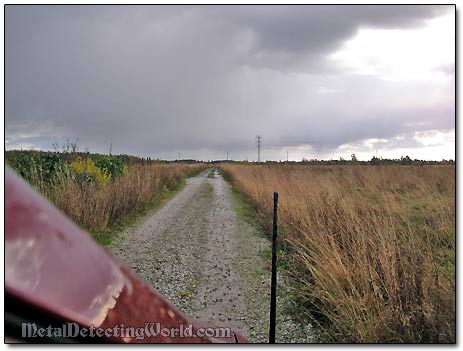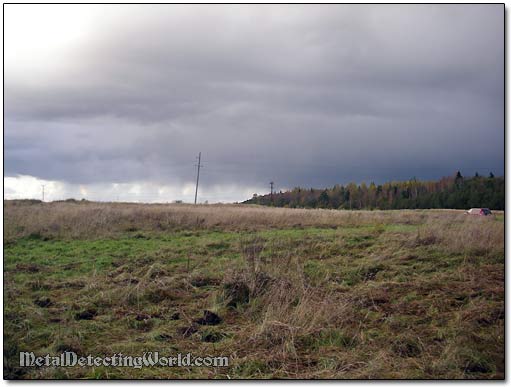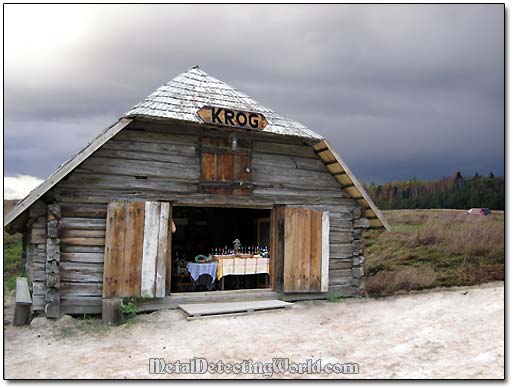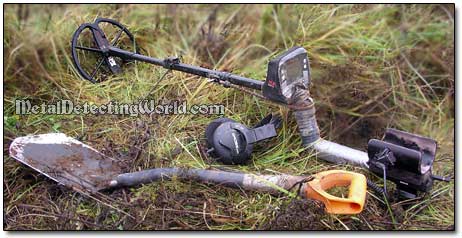Part I - Metal Detecting at the Swedish Tavern Site, page 21
2nd Hunt - Recovering Even More Coins with Minelab E-Trac
We returned to the site three days later. The weather was unstable, but it was almost the end of the season, so we were taking any opportunity to hunt. Nikolai was going to detect at the unsearched spots and the outskirts of the site. And my plan was to do a field-test for Minelab E-Trac at the spot that we had already "hammered" to the last signal.
I thought that the current test conditions - an abundance of iron nails and absence of good signals at the searched out hunt site, would be the most challenging for any advanced metal detector. Thus, recovering more coins at the "cold" spot would actually prove the E-Trac's outstanding capabilities claimed by the Minelab Electronics. You can read about the test in my E-Trac's Field-Test Report.
Driving on the 400-Years-Old Road Leading to the Site

The site was as we left it three days ago. I still could not believe how this "hunky-dory spot," located in the middle of the searched out area, had been missed by all local metaldetectorists. The good thing was that this site was not the last "forgotten place" in the area.
Metal Detecting Site OF a Swedish Krog

By looking at the evidence of our previous activities - numerous spots of freshly dug dirt and the flattened grass, I could now see where exactly the tavern stood a few centuries ago. I could simply switch on my imagination and see a complete picture!
Metal Detecting Site WITH a Swedish Krog

I also switched on my Minelab E-Trac and adjusted a few settings. If you are interested, you can read about the settings in My Programs for Minelab E-Trac.
Minelab E-Trac and Fiskars Shovel
